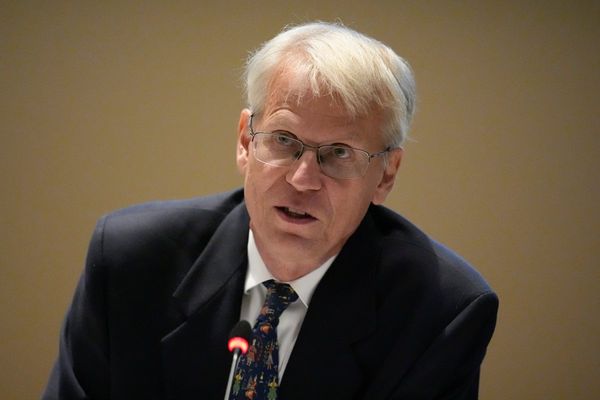Climate change is not new: temperatures have been rising for decades as a result of global warming. In South Africa’s city of Pietermaritzburg, four low-income urban communities have experienced drought, heatwaves, severe hailstorms, devastating flooding events that killed hundreds of people and displaced thousands, and wildfires as a result of climate change. Environmental scientist Sithabile Hlahla interviewed people in 378 homes there and found that they were not coping well with climate disasters.
How has extreme weather affected life in these communities?
We spoke to people in the France, Swapo and Willowfontein communities near the Pietermaritzburg central business district, and in Mpophomeni, a peri-urban area on the boundary of the city. The households had an average of five people and some had up to 15 people.
Pietermaritzburg is an inland city with growing rates of urban poverty, unemployment and unequal development. It’s the capital of the second most populous province in South Africa, KwaZulu-Natal, and the second largest urban centre in the province.
KwaZulu-Natal is very vulnerable to climate-related risks and has been affected by waves of devastating floods for several years.
Read more: Why are floods in South Africa's KwaZulu-Natal so devastating? Urban planning expert explains
We found that the biggest impact of climate change in our study areas was on agricultural activities. The communities grew maize, cabbage, spinach, potatoes, beans, butternut, beetroot, carrots and onions in their backyards, to eat and to sell locally.
Climate change-related weather changes caused damage to these crops, leading to much smaller harvests. The people we interviewed were then forced to buy food. The reduced agricultural output also meant that urban food prices increased. One said:
We can’t plant anymore and that’s a big problem because food is expensive.
As another put it:
I’m a farmer and everything I do depends on the weather.
Our research found that increases in food prices tend to affect female headed households the most, because there is only one breadwinner in these families. The gender wage gap means women earn less money, while also having to undertake unpaid care work (household chores and child care). This reduces the amount of time women have available for paid employment.
Community members complained that their children suffered from ill health. They believed that the heating climate and erratic weather changes caused skin rashes, influenza, headaches, and worsening blood pressure, diabetes and epilepsy.
In Willowfontein, a drought meant people had no water for three years other than from a weekly water truck delivery. Extreme weather events damaged and destroyed livestock, property and infrastructure, which were costly to replace.
What coping mechanisms are these communities using?
Our research found that the coping strategies were reactive, short-term and unsuitable for adapting to long-term climate-related risks.
For example, people tried planting more crops, using more fertiliser and watering crops more frequently. Some tried to store water (in buckets) for household use and to irrigate crops during periods of drought. But this water was not always enough meet their daily needs, let alone water the crops.
People said during extreme hot and cold spells, they stayed indoors and used fans or heaters.
Read more: Floods in South Africa: protecting people must include a focus on women and girls
To cope with flooding, some built drainage furrows to divert the water from heavy rains. Others were forced to evacuate during floods.
Financial stresses were top of mind. Many said they used their grant money to cope. South Africa has a government social welfare grants system which provides financial support for destitute children, pensioners, foster parents and disabled people. The grants currently range from R560 to R2,335 (US$31 to US$131) per month.
These grants do not actually eradicate poverty as they are meant for individuals but are often used to support several people in a family.
Read more: How cities can approach redesigning informal settlements after disasters
Residents also said they relied on assistance from local government, councillors or non-profit organisations. They also tried relying on social networks such as neighbours and relatives for support, saying they received more assistance from neighbours than relatives.
The community members also pointed out the indirect costs. Many sent remittances to relatives in rural areas every month, where the unemployment rate can be as high as 80%. When rural relatives are affected by climate disasters, the people we interviewed need to send additional funds, as well as pay for their own climate damage costs.
Why are the communities unable to cope with climate change?
Fewer than half of those we interviewed had coping strategies in place. Coping or adapting requires resources and more often than not, these communities did not have these resources and did not know how to access them.
People also said they did not know how to adapt. Some believed that nothing could be done:
While climate change has been on the global agenda for decades, for many within the community, it is a relatively new concept, hence attempting to cope is difficult, without assistance.
Others believed that climate change is a natural process and that “nature can fix itself” or that “God is the one person who can control the weather”. On the other hand, some felt that climate change did not affect their livelihoods, and others said they would cope as the need arose.
What needs to happen next?
The people we interviewed experienced unemployment and crime, so finding ways to respond to climate change was not really a major concern. Many felt that local government should be responsible for climate change adaptation but did not trust them to do so.
We concluded from our findings that sustainable community-based climate adaptation projects that link poverty with climate change, and create green jobs, could assist.
Examples might be recycling projects, or growing organic crops that could be sold for higher prices. Growing indigenous tree seedlings and selling them for reforestation projects could also bring in some income.
Collaborations between communities and the public and private sector, non-governmental organisations, and faith-based organisations are needed to make these a success.
The climate in South Africa is continuing to change at a rapid rate and as our research has shown, people living on the margins of society will continue to be the worst affected. Effective climate change response in urban and peri-urban areas means that these communities must be economically empowered so that they can access resources to respond to climate change.
There is also need for more awareness of climate change and how to adapt to it. Furthermore, encouraging urban communities to work together during times of heightened climate risks, highlighting the importance of social networks, and making sure these communities are involved in decision-making processes, will support more effective responses to climate change.
Sithabile Hlahla received funding for this research from the African Climate Change Fellowship Program (ACCFP); the Association of African Universities (AAU); and South Africa’s National Research Foundation (NRF).
This article was originally published on The Conversation. Read the original article.







